Every kitchen needs a dishwasher. After a long day at work, washing and cleaning dishes can be pretty exhausting. Having a dishwasher installed at home eliminates this problem.
Dishwashers and kitchen sinks go well together. You can manage your kitchen easily and comfortably with this combination.
However, if you have a small kitchen with improper spacing, you may not be able to install the dishwasher with the sink.
You’re probably wondering if you should install a dishwasher in your kitchen now, right?
Let’s say your kitchen isn’t large enough for a dishwasher. Will the dishwasher work if you install it somewhere else without a sink?
It is usually necessary for dishwashers to have a sink to draw water from while they clean and dispose of it. Note that the dishwasher can be used without a sink.
When you learn how to plug a dishwasher without a sink, your dishwasher management and draining become easier.
Can I Use A Dishwasher Without A Sink?
Using a dishwasher without a sink nearby is possible but installing one might be a bit more difficult.
Again, there would be some difficulty, but it would be possible because the sinks both supply and dispose of all the water from the dishwasher.
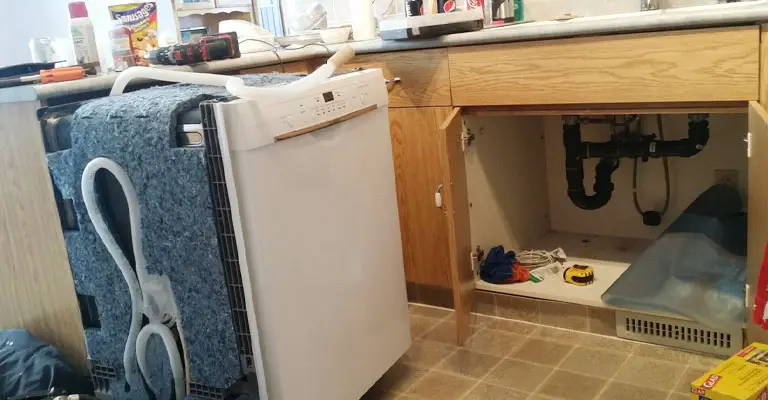
Just take a look around you. Dishwashers cannot always be installed in the spaces left over after homeowner’s re-plan their spaces. Therefore, there is no need to worry if your kitchen lacks space.
Our guidelines will make it easy for you to use a dishwasher without a sink in your kitchen with some planning.
Things To Consider:
Plumbing the dishwasher without a sink will require a dishwasher island. To assist it in working properly, you will also need to collect it with the draining and water lines.
As a final consideration, you should consider the distance between the sink drain and the dishwasher supply line and electricity and ventilation options.
Plumbing A Dishwasher Without a Sink: Step by Step Guide
You can still plumb it even if the sink isn’t there for installing the dishwasher. However, to complete the plumbing process, you will need to complete a few more steps.
Attach the P trap to the tee branch separately from the dishwasher. Before you run the dishwasher to the drain line, you will need to connect the dishwasher to the air gap. The entire process will be discussed in the following steps.
Step 1: Gather All The Tools
When you plan to install dishwasher drains without a sink, you will need a few items. Draining will continue without the sink. It can be challenging to go the alternative route. For the draining installation, you will also need the following items.
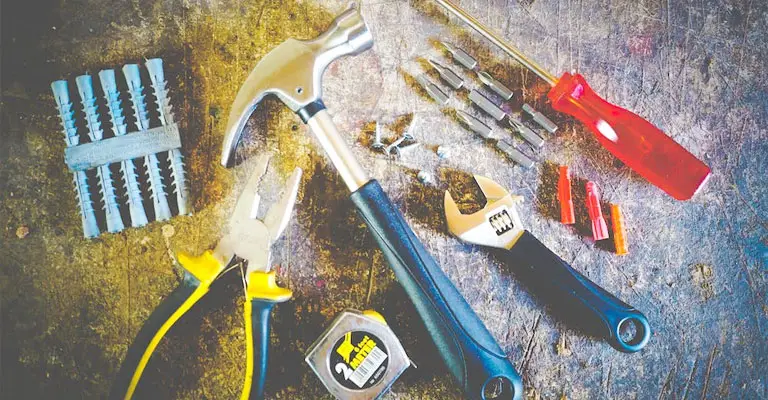
- Allen wrench
- Screwdriver
- Plumbing tape
- Air gap
- Tee branch
- Braided supply hose
- P-trap
Step 2: Installing the P trap
To connect the P trap to the dishwasher, you must ensure everything is ready. To accomplish this, the longer tailpiece of the dishwasher needs to be attached to the p trap. Using a screwdriver, secure the slip nuts.
Make sure you choose the right size P trap. Therefore, you should choose the p trap according to the size of your dishwasher drain. Then, connect the longer tailpiece to the P trap once you have the right one.

Cover the connection point with Teflon or plumbing tape after securing the connection. A rubber washer would help make the entire system watertight by connecting the p trap to the tailpiece.
As a result of the plumbing tape, the connection will also last longer. To make dishwasher maintenance easier, it prevents mold and residue growth around the connection point.
Step 3: Connecting The Tee Branch To The P Trap
Under the dishwasher, there is a dishwasher tee. With this attachment, you can connect your dishwasher’s drain to your home’s main drainage system.
The p trap must be connected to the other side of the dishwasher after it has been connected to the dishwasher.
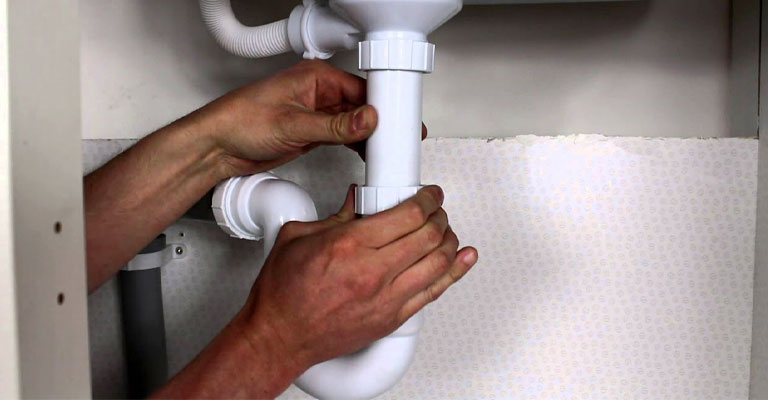
Next, you should work on the dishwasher drain hose. Before draining it, you must connect it to the air gap’s inlet. Air gaps usually have a larger inlet side. It should be easy to find.
Step 4: Installing The Main Drain
The main draining line needs to be connected to the dishwasher now. It is always necessary to run the drain hose through the air gap or the high loop attached first. It connects with the draining line after going through the loop or air gap.
Garbage disposal will not be available with the dishwasher since there is no sink. Therefore, the plumbing system must be installed without this. You will need a branch fitting to connect the dishwasher tailpiece to the drain line.
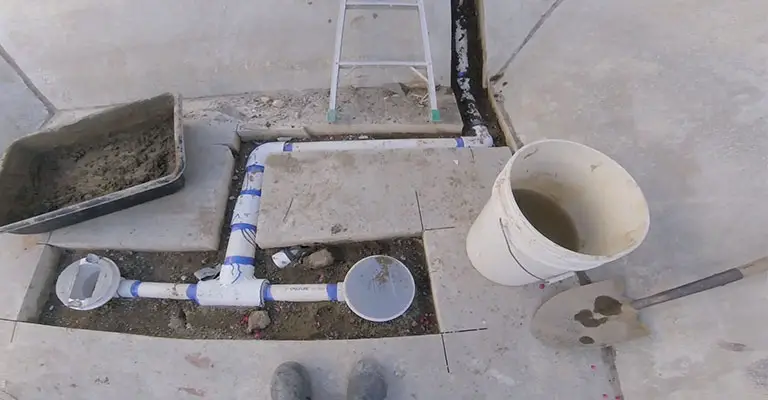
Once the draining line has been connected, the point needs to be secured. Using a metal clamp and plumbing tape will help you secure it. The connection may soon become loose if the clamp is not attached.
Step 5: Install The Water Supply Line
To use the dishwasher, you will need to connect it to the water supply line. For this, you will need a hot water line. An extended hose can be connected to the nearby hot water faucet or water supply to connect the dishwasher easily.
Your dishwasher’s water inlet valve can be found there. The water supply hose and inlet valve should be connected. You should ensure that it can accommodate a hot water supply without damage.
Its other end should be connected to the nearest shutoff valve for the hot water supply. For example, a kitchen or bathroom sink uses the same water supply tube.
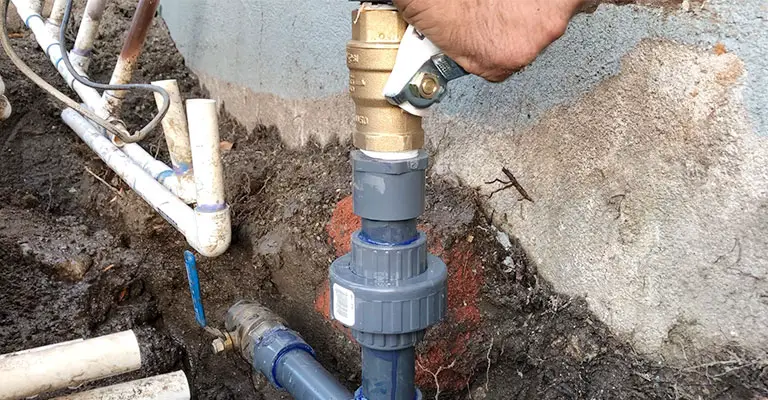
Measure the distance between the dishwasher and the hot water supply line to get the right-sized dishwasher hot water line hose.
To connect the dishwasher’s supply hose to the supply hose, you will need a 90-degree elbow. As a result of its brass material, it is called a brass fitting. Make sure you get a good-quality brass fitting to avoid rust and corrosion.
Step 6: Make Sure The Venting And Electrical Systems Are Working
The electrical line and venting system must be properly installed for the dishwasher to work properly. If you are confident enough, you can attach the electrical wiring.
The venting system is similar. We recommend you call a professional to fix the dishwasher’s electrical wiring and venting system.
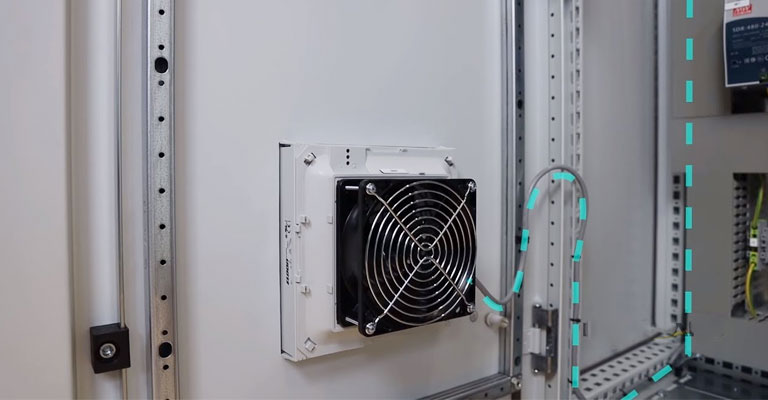
If a wrongly mounted dishwasher electrical system is wrong, your plumbing system may suffer catastrophic damage.
It may even cause you harm. Therefore, it is important not to compromise your dishwasher’s plumbing system or electrical wiring.
Is It Possible to Install a Dishwasher on an Island Without a Sink?
There is a possibility that a dishwasher can be installed without a sink, but this is a bit more challenging. It will be necessary to run separate water lines and a separate drain to the island without a sink nearby.
Furthermore, dishwasher drains must be ventilated to comply with local building codes. Therefore, it will be necessary to have a separate air vent to drain an island dishwasher.
Ventilation
To ensure smooth flow of wastewater, the dishwasher’s drain pipe needs to be vented. In addition, there will be a need for an island loop vent on an island where there is not an easy connection to the sink vent.
Loop vents are pipes that loop under countertops to provide drains as much air as possible. The loop vent will be connected to the sink through piping under the floor.
The Distance From The Sink Drain
It is possible to install a dishwasher on an island and connect it to a sink drain. A dishwasher’s user manual will usually indicate how far it can be installed from a sink and still be connected to the drain.
The dishwasher water is ejected forcibly from the machine, allowing you to run the drain hose for a longer distance. In the case of an island dishwasher, the drain hose must be taken into account when determining distances.
Electricity
Electrical outlets with a rating of at least 20 amps are required for the island. For more information about your specific model, check the manufacturer’s website or manual.
An island installation requires a thorough understanding of the electrical requirements. A dedicated circuit may also be required for dishwashers that have a large capacity or are commercial dishwashers.
Supply Lines
Island dishwashers require water supply lines to be run out to them since they do not have a sink to connect to. Therefore, you may need to gain access to the crawlspace or basement to accomplish this.
The hot water heater in your home will need to run out to the island to provide hot water. You might be better off choosing a dishwasher that heats its own water if cold water is readily available.
Would I Be Able To Install A Dishwasher Without A Sink On My Own?
You should be able to answer this question based on your own knowledge and expertise in this subject. When you have some basic plumbing tools at your disposal, installing a sink should be pretty straightforward.
There are many homeowners out there who do it themselves as well. A plumber is usually called to make sure everything goes smoothly. Now that the sink has been removed, it will be a bit more difficult, but not impossible.
It would be a fun challenge to test your plumbing skills while saving the plumber’s fee at the same time.
Is It Possible To Plumb A Dishwasher Anywhere?
As long as it is within reason, yes. A freestanding model can be installed anywhere there is water and drain connection. Installation of integrated models requires access to a water supply and drain within a kitchen cabinet.
Is It Possible To Have A Dishwasher That Is Not Near The Sink?
Installation is much easier when the dishwasher is near the sink. Generally, dishwashers are usually located right or left next to the sink in most kitchens. You can also put the dishwasher elsewhere if you don’t have the space.
Can I Drain The Dishwasher Directly Into The Waste Line?
It is not practical to connect the dishwasher directly to the waste line, regardless of building codes. Having food residues in the waste line can block it.
Is It Possible To Use A Dishwasher After Removing A Sink?
Dishwashers with sinks and dishwashers without sinks work almost the same way. Reroute the water supply line and drainage line again if you need to remove the sink for remodeling or another reason and your dishwasher was previously connected to the sink.
The hoses for the drainage and water lines on dishwashers are pretty long these days. The hoses can be extended up to 12′ with attachments. Using the methods discussed earlier, you can easily redirect these lines and use the dishwasher even after removing the sink.
The Bottom Line
This is a good example of how a dishwasher can be used without a sink. Even though it isn’t easy, if you carefully consider the abovementioned factors, you can make it work well.
The dishwasher can now be plugged into the wall without a sink. You may be surprised to learn how simple the dishwasher’s plumbing system is. The minimum plumbing skills you need are, however, required.
In addition, if you are remodeling your kitchen, ensure adequate space and connection for the dishwasher near your sink. There’s nothing like a dishwasher that sits right next to your sink regarding convenience and efficiency.
It is also recommended that you hire a professional plumber to install the venting system so that the water will flow smoothly. It is crucial because improper venting or electrical outlets can cause serious problems.






